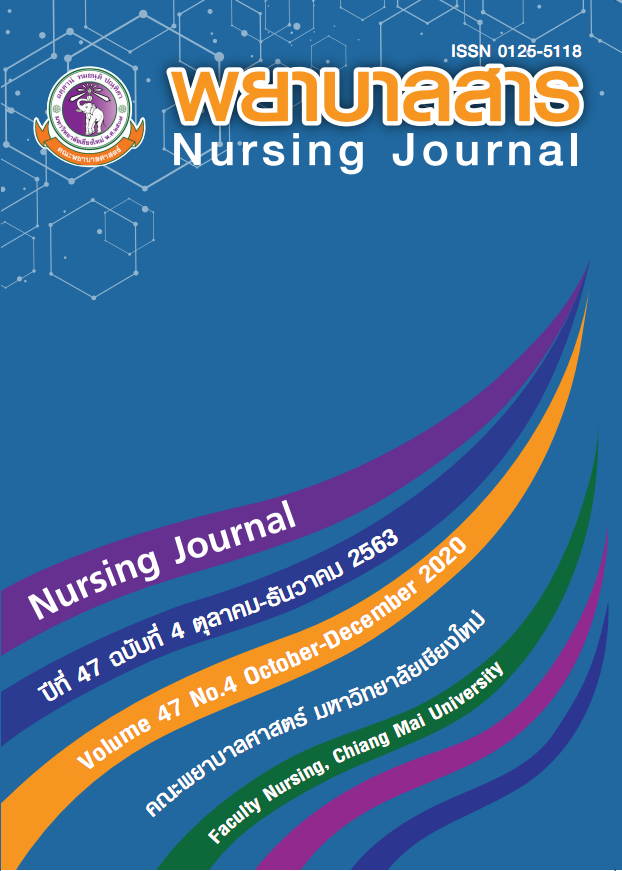Situational Analysis of Risk Management for Postpartum Hemorrhage, Chiangrai Prachanukroh Hospital
Keywords:
Chiangrai Prachanukroh Hospital, Situational Analysis, Risk Management, Postpartum HemorrhageAbstract
Risk management in the health service system aims to identify, evaluate, and take corrective
action against potential risks that could lead to patient injury. The objectives of this study were to
describe the risk management situation, explore the problems and barriers to risk management,
and explore ways to solve problems related to risk management for postpartum hemorrhage at
Chiangrai Prachanukroh Hospital. The participants included 8 risk management committee team
members of the obstetric department, including the nursing director, 17 professional nurses, and
9 nurse aides from the labour room. Data were collected through questionnaire, interview, and
brainstorming. Data were analyzed using descriptive statistics and content analysis.
1. Risk management for postpartum hemorrhage at Chiangrai Prachanukroh Hospital is
presented using domains in Supachutikul’s risk management process (2000):
1.1 Risk identification: Perception of risk management with regards to risk identification was
at a high level.
1.2 Risk assessment or risk analysis: Perception of risk management with regards to risk
assessment/analysis was at a high level.
1.3 Action to manage risk: Perception of risk management with regards to actions to manage
risk was at a high level.
1.4 Evaluation: Overall, participants perceptions of risk management at their institutions
were at a high level.
2. The problems and barriers related to risk management included incomplete incident
records, delayed incident reviews, lack of experience in conducting assessments and following the
guidelines, delayed incident reporting in the intranet system, a complex and unstable reporting
system via intranet, insufficient training, fear from staff in reporting incidents.
3. The participants’ made the following suggestions for solving problems: the timeline for
reviewing incidents should be clear and consistent, a confidential incident reporting system
should be developed and risk management staff trainings should be promoted., Participants also
suggested improving the incident reporting system, developing an incident reporting channel, and
promoting positive attitudes towards incident reporting.
References
Chanpanyasakun, O. (2010). Situation analysis of risk management Pediatric Ward 3, Maharaj Nakorn Chiang Mai Hospital (Independent study, Chiang Mai University). (In Thai)
Department of Health, Ministry of Public Health. (2017). Documents for academic conference.Nonthaburi: Bureau of Health Promotion, Department of Health, Ministry of Public Health. (In Thai)
Durable material work Chiang Rai Prachanukroh Hospital. (2018). Summary of the monthly issue of durable goods. Chiang Rai: Chiang Rai Prachanukroh Hospital. (In Thai)
Feinberg, E. C., Molitch, M. E., Enders, L. K., & Peaceman, A. M. (2005). The incidence of sheehan’s syndrome after obstetric hemorrhage. American Society for Reproductive Medicine, 84, 975-979.
Institute and Hospital Accreditation. (2019). HA UPDATE 2019. Bangkok: Hospital Quality Improvement and Accreditation Institute. (In Thai)
Labor room of Chiang Rai Prachanukroh Hospital. (2016a). A Guide to Practicing Care for High-Risk Mothers. Chiang Rai: Chiang Rai Prachanukroh Hospital. (In Thai)
Labor room of Chiang Rai Prachanukroh Hospital. (2016b). Statistical data of labor rooms, yea 1986. Chiang Rai: Chiang Rai Prachanukroh Hospital. (In Thai)
Maternal and Child Health Work, Health Zone 1. (2017). Summary of the meeting of the Maternal and Child Health Development Committee 2017. Nonthaburi: Ministry of Public Health. (In Thai)
Mousa, H. A., & Alfirevic, Z. (2007). Treatment for primary postpartum haemorrhage. Cochrane Database of Systematic Reviews, 1, 1-25.
Nantsupawat, R. (2011). Patient Safety Culture and Nursing Outcome among Professional Nurse in Northern Regional Hospitals. Nursing Journal, 38(4). (In Thai)
Pattama, N. (2012). Situation Analysis of Risk Management in Male Medical Ward 1, Lamphun Hospital (Independent study, Chiang Mai University). (In Thai)
Phattharaporn, T. (1990). Situation Analysis. Instruction document Faculty of Nurse Chiang Mai University. Chiang Mai: Chiang Mai University. (In Thai)
Ramanathan, G., & Arulkumaran, S. (2006). Postpartum hemorrhage. International Journal of Gynecology Canada, 28, 967-973.
Supachutikul, A. (2000). Hospital risk management system. Bangkok: Design. (In Thai)
Wattanapong, S., Chitreecheur. J., & Kasatpibal, N. (2016). Effects of multimoda strategies onprevention practices and incidence of blood and body fluid exposures among labour room nurses. Nursing Journal, 43(2). (In Thai)
Willson, C. R. M. (1992). QA/CQI: Strategies in health care quality. Toronto: W.B. Saunders.
World Health Organization. (2007). WHO Recommendations for the prevention of postpartumhaemorrhage. Retrieved from http://whqlibdoc.who.int/hq/2007/ WHO_MPS
Yoochamrat, P. (2013). Situation Analysis of Risk Management in Patients in Hariphunchai MemorialHospital, Lamphun Province (Independent study, Chiang Mai University).
Downloads
Published
How to Cite
Issue
Section
License
บทความที่ได้รับการตีพิมพ์เป็นลิขสิทธิ์ของวารสารพยาบาลสาร
ข้อความที่ปรากฏในบทความแต่ละเรื่องในวารสารวิชาการเล่มนี้เป็นความคิดเห็นส่วนตัวของผู้เขียนแต่ละท่านไม่เกี่ยวข้องกับมหาวิทยาลัยเชียงใหม่ และคณาจารย์ท่านอื่นๆในมหาวิทยาลัยฯ แต่อย่างใด ความรับผิดชอบองค์ประกอบทั้งหมดของบทความแต่ละเรื่องเป็นของผู้เขียนแต่ละท่าน หากมีความผิดพลาดใด ๆ ผู้เขียนแต่ละท่านจะรับผิดชอบบทความของตนเองแต่ผู้เดียว






